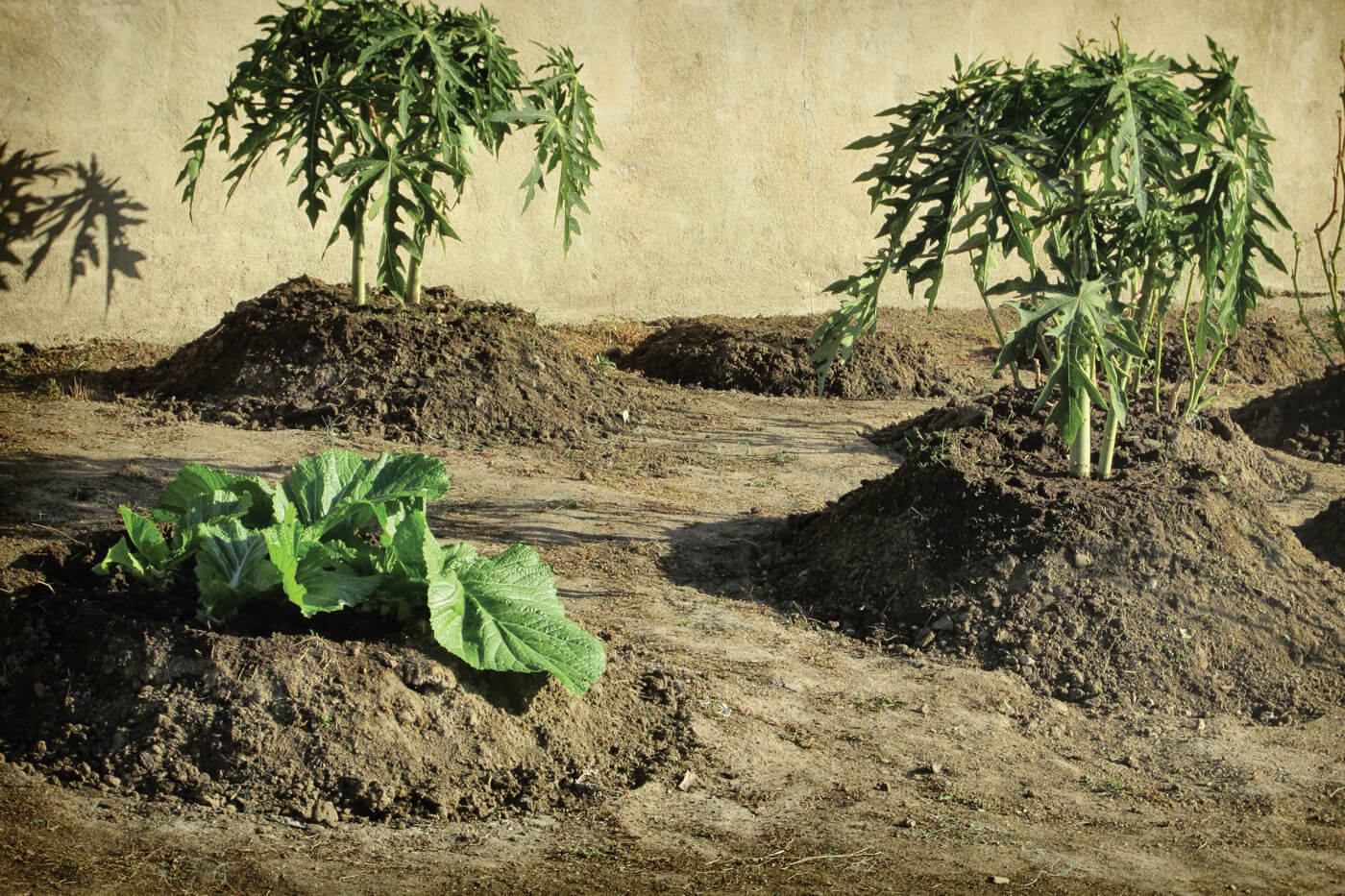TIPS AND GO-TO RESOURCES FOR SUCCESSFUL GARDEN PLANNING AND PLANTING
Welcome to the world of homestead gardeners! Whatever your homestead’s size, from apartment to hobby farm, there are a few basic steps we all must follow when planning our gardens.
PICK A GOOD LOCATION
Just like in real estate, LOCATION, LOCATION, LOCATION is one of the key considerations when you are planning your garden. Regardless of whether your garden is in containers or in-ground, it will need the following features to be successful:
Direct, strong sunlight for at least six hours a day; more is better. Direct sunlight in the morning, rather than the afternoon, is preferred as it helps to dry the dew that accumulated overnight.
Shade in the afternoon is helpful when you are in a relatively hot climate to help cool the plants during the hottest part of the day.

paths through the garden. Here, one path is lined with stone and another with wood. (Photo by Christopher Nyerges)
An edible garden, regardless of its size, is a great way to get started on your homesteading journey, and doing some up-front planning will make it much easier and successful in the long run.
A ready supply of water, either from rain or the garden hose, is critical.
Un-compacted soil, with the right mix of nutrients, adequate drainage, and pH level for the plants you decide to grow.
Enough space to plant what you want and still be able to move around and work in the garden.
And most importantly, a location that you will go by every day to help you both enjoy your garden and to make it easily accessible for you to tend to its needs.
GET FAMILIAR WITH JACK FROST’S COMINGS AND GOINGS
If they are not already, the last frost and first frost of the year will be dates that are as important to you as your birthday. They define how long your growing season is, when you need to start your seedlings, when you plant, and when you need to start harvesting the bounty of your new garden.
While the frost dates are important, they are not foolproof. As the University of Maryland’s Cooperative Extension reminds, here are some caveats to keep in mind:
- The likelihood of frost will vary between landscapes in the same town or even neighborhood, due to many factors such as changes in the wind, elevation, and proximity to buildings and water.
- Early in the season, after planting outdoors, closely monitor weather conditions using web sites, a weather radio, or newspaper and TV for reports of an unexpected frost. If predicted, be prepared to protect tender plants or to bring them indoors.
Dates for first and last frosts are available for each state online. Some sources may even give the likelihood of a frost on a series of dates so that you can gauge the amount of risk you want to take in picking your dates.
YOUR NEW BEST FRIENDS
There are a number of ways to find the information you need to do your vegetable garden planning.
To pick plants that will suit your area, consult the U.S. Department of Agriculture’s Plant Hardiness Zone map, located at planthardiness.ars.usda.gov/PHZMWeb/.

The map shows you the range of lowest temperature for each state, which corresponds to its zone. The website also provides more detailed maps for each state.
Other great sources are other local gardeners and nurseries.
Your best source is the staff at your local Cooperative Extension Service office. They provide information on farming and gardening specific to their states and regions, offer classes, and conduct ongoing research and studies related to the agriculture in your state. To find information on the one nearest you, reference the USDA website’s map at csrees.usda.gov/Extension/.
NOW MAKE IT HAPPEN
An edible garden, regardless of its size, is a great way to get started on your homesteading journey, and doing some up-front planning will make it much easier and successful in the long run. Think through why you want a garden, make the best use of advice from local resources to figure out what and how to plant, and then get the tools and materials needed to execute your design. Then cook a great meal with the food you grew yourself for your friends and family.
SOME OF YOUR BEST TOOLS AREN’T KEPT IN THE SHED
There are many websites that have information for the new homesteader or home gardener, containing good advice, downloadable documents and spreadsheets for planning your garden or picking the right vegetables for your region The following are some of the more useful ones, but do your own searching, too, to find what works best for you:
North Carolina Cooperative Extension
growingsmallfarms.ces.ncsu.edu/growingsmallfarms-farmrecords/
Beginning Farmers.org
beginningfarmers.org/free-excel-based-crop-planning-tool-for-farmers/
Gardens Alive!
GrowVeg
National Gardening Association
Old Fashioned Families
Burpee Seeds and Plants
Farmer Fred
Editor’s note: A version of this article first appeared in the August, 2015 print issue of American Survival Guide.


